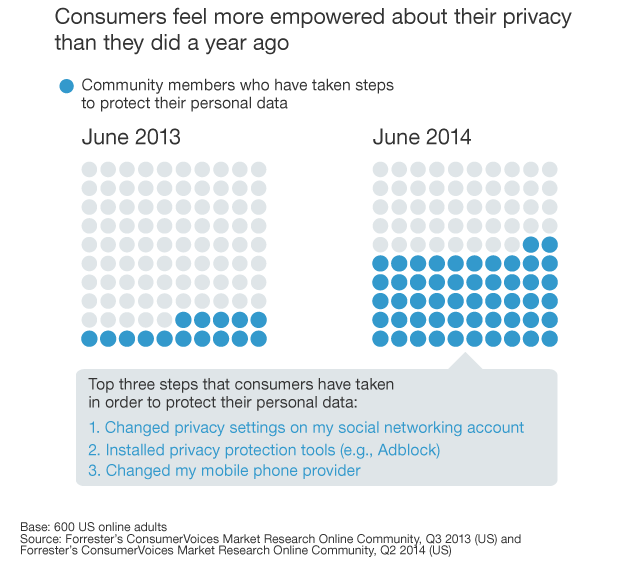The Data Digest: The Evolution Of Consumer Attitudes On Privacy
With Fatemeh Khatibloo
The tide is turning on privacy. Since the earliest days of the World Wide Web, there has been an increasing sense that the Internet would effectively kill privacy – and in the wake of the NSA PRISM program revelations, that sentiment was stronger than ever. However, by using our Forrester’s Technographics 360 methodology, which blends multiple qualitative and quantitative data sources, we found that attitudes on privacy are evolving: Consumers are beginning to shift from a state of apathy and resignation to caution and empowerment.
In our recently published report, we integrate Forrester's Consumer Technographics® survey data, ConsumerVoices Market Research Online Community qualitative insight, and social listening data to provide a holistic view of the changes in consumer perceptions and expectations of data privacy. In the past year, individuals have 1) become much more aware about the ways in which organizations collect, use, and share personal data and 2) have started to change their online behavior in response:

Of course, even now, consumers demonstrate a wide range of attitudes toward an understanding of data privacy: Some individuals tune out technology news, while others struggle to navigate the legalese of the average privacy policy. But this lack of understanding shouldn’t be taken as apathy – as knowledge gaps close, individuals seek out companies that actually work to win their customers’ trust.
This latest research further emphasizes what we’ve been saying since we redefined the concept of privacy: Provide transparency and choice about data collection and usage practices or risk losing your customers.
It’s time to leverage qualitative and quantitative insights to understand your customers’ privacy attitudes, adjust your practices accordingly, and prioritize privacy and preference on your business planning agenda.
